detail profile maurice nasil
Peran Yang Di Mainkan Maurice Nasil
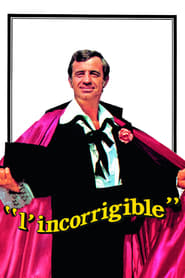 Victor Vautier is incorrigible hes in...
Victor Vautier is incorrigible hes in...Incorrigible 1975
Victor Vautier is incorrigible: he's in constant motion, working several cons at once, using different names and changing disguises. He's charming and outrageous, incapable of uttering a sentence that isn't embellished or an outright lie. His life goal is to make enough money to build a sea wall to protect Mont-Saint-Michel. Charlotte, a parole officer, shows up: she's young and seems taken in by Victor. He discovers she lives above the Senlus Museum, where her parents are the curators. With two pals he decides to steal a priceless El Greco triptych and then ransom it back to the cultural ministry. What will Charlotte do when she realizes he's used her to make a fortune?
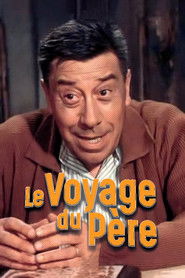 Determined to assert his paternal rights...
Determined to assert his paternal rights...Father's Trip 1966
Determined to assert his paternal rights, Quentin leaves his small village on the Swiss border to go to Lyon to look for his daughter, now a hairdresser, who, busy with her work, hasn't been back to the village for two years. In a few days, it will be Denise's birthday, the youngest of his daughters, and, urged on by his wife, he sets off, determined to bring the prodigal son back to the family celebration. But Denise is now living off her charms.
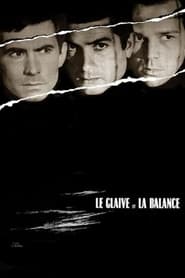 Three young men are suspected of...
Three young men are suspected of...The Sword and the Balance 1963
Three young men are suspected of kidnapping and murdering a little boy. Most likely, two of them are really involved, but one is not. All of their pasts are questionable, riddled with violence and controversy. Neither the police nor the court can decide how to solve that puzzle.
 In 1942 a French prisonner of war...
In 1942 a French prisonner of war...The Cow and I 1959
In 1942, a French prisonner of war in Germany decide to escape to France using a cow hold by a lunge as a decoy. He cross all Germany in this way.
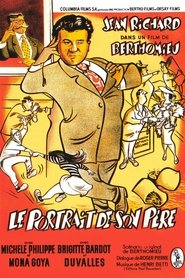 Paul has to leave his country...
Paul has to leave his country...His Father's Portrait 1953
Paul has to leave his country home to collect his father's inheritance of a department store. A natural-born son, Paul's stepmother gives him a cold reception, and he's appalled by the behavior of his half-sister Dominique, an existentialist of the highest order. Paul's gumption restores the Galeries Parisiennes to its former glory, and he gives a farewell present to a more subdued Dominique. He returns to his village, arm in arm with the wise Marie-Louise, ex-saleswoman at the Grand Magasin.
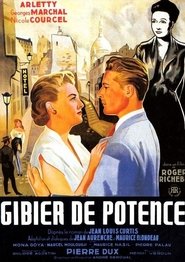 Back from the war Marceau Le...
Back from the war Marceau Le...Gigolo 1951
Back from the war, Marceau Le Guern remembers. Educated in an orphanage run by Dominican brothers, he fell into misery when he left it. His only asset was his good looks, which did not escape the attention of Madame Alice, a shady woman who persuaded him to pose for pornographic photos meant for lonely aging women. Marceau also served as a gigolo before the war and captivity put an end to this juicy business. Now he wants to start a new life, all the more as ha has found love in the person of a pure young lady named Dominique. But Madame Alice won't hear of it...
 Jean Michaut is a bargeman who...
Jean Michaut is a bargeman who...The Lovers of Bras-Mort 1951
Jean Michaut is a bargeman who lives nearby an old barge cemetery named "Bras-Mort". He is in love with Monique, the daughter of a wealthy boat owner. The girl returns his affection but runs her head against the wall of her family's class prejudices. Her "nearest and dearest" prove indeed prepared to do everything to separate the two lovers. But Monique will not buy in. On the contrary, she leaves her intolerant family to live with Jean among simple, more tolerant bargemen.
 Suppose lost and found objects could...
Suppose lost and found objects could...Lost Souvenirs 1950
Suppose lost and found objects could talk... But they can! At least four of them... : -A statuette of Osiris remembers how two ex-lovers, a model and a good for nothing who claimed to be an Egyptologist, met again one Christmas Eve. -A violin has things to say about Raoul, a humble policeman who lost Solange, a widowed grocer he loved, to a god-dam seducing busker also named Raoul. -A scarf was witness to an eerie romance between a young madman and girl he had saved from suicide. -A funeral wreath lets us know how it caused a young woman to believe her lover dead. After having told their respective story, the objects return to their customary stillness.
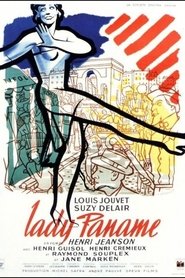 The evocation of Paris in the 1920...
The evocation of Paris in the 1920...Lady Paname 1950
The evocation of Paris in the 1920s mingles with the rapid rise of the irresistible Caprice, a talented singer, and her tumultuous love affair with Jeff the composer. A photographer nicknamed Bagnolet, a gentle anarchist, gently monitors the activities of Caprice, who has become Lady Paname and, in the absence of morality, makes love triumph.
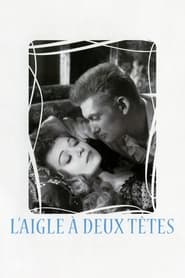 Political intrigue and psychological drama run...
Political intrigue and psychological drama run...The Eagle with Two Heads 1948
Political intrigue and psychological drama run parallel. The queen is in seclusion, veiling her face for the ten years since her husband's assassination, longing to join him in death. Stanislas, a poet whose pen name is Azrael, is a suicidal anarchist, his imagination haunted into hate by longing for this queen who's drawn apart. He enters her private quarters intent on killing her then himself, but they fall in love, in part because he looks like the king. Stanislas wants her to regain political power by appearing to the public, and she tries to convince him to find hope and escape. All the while, the queen's enemies plot to keep the lovers together but to thwart their plans.
 Following a trivial road accident Ariane...
Following a trivial road accident Ariane...As Long As I Live 1946
Following a trivial road accident, Ariane, an international adventuress, falls in love with Bernard Fleuret, a young artist-painter with diseased lungs. Being pursued by the police, she chooses to hide in the sanatorium where the young man is treated. Ariane proves so smitten by love that she finally changes her ways: she decides to let herself be arrested, sure as she is she will be reunited with her loved one later on.
 In 1919 Pierre Darmont a handsome muchloved...
In 1919 Pierre Darmont a handsome muchloved...Night in December 1941
In 1919, Pierre Darmont, a handsome, much-loved piano virtuoso, falls in love with Anne Morris, a young woman who shares his tender feelings. But, quite inexplicably, after an unforgettable night, Anne vanishes without trace. Twenty years later, Pierre, at the peak of his glory, has become embittered. Unable to recover his unhappy love affair, he has collected women without ever committing himself to any. Until some night he meets the eyes of a beautiful young lady, who happens to be the spitting image of his great love...

 Arnolphe plans to marry Agns his...
Arnolphe plans to marry Agns his... An escaped convict makes a remote...
An escaped convict makes a remote...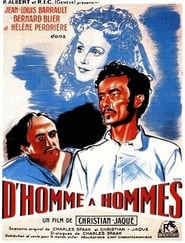 The story of the Swiss soldier...
The story of the Swiss soldier...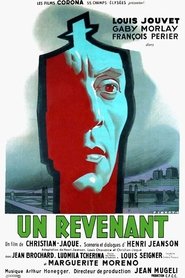 A ballet producer returns to his...
A ballet producer returns to his...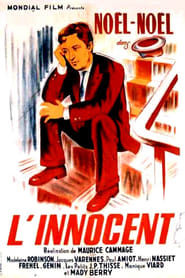 A florist in a nightclub in...
A florist in a nightclub in...